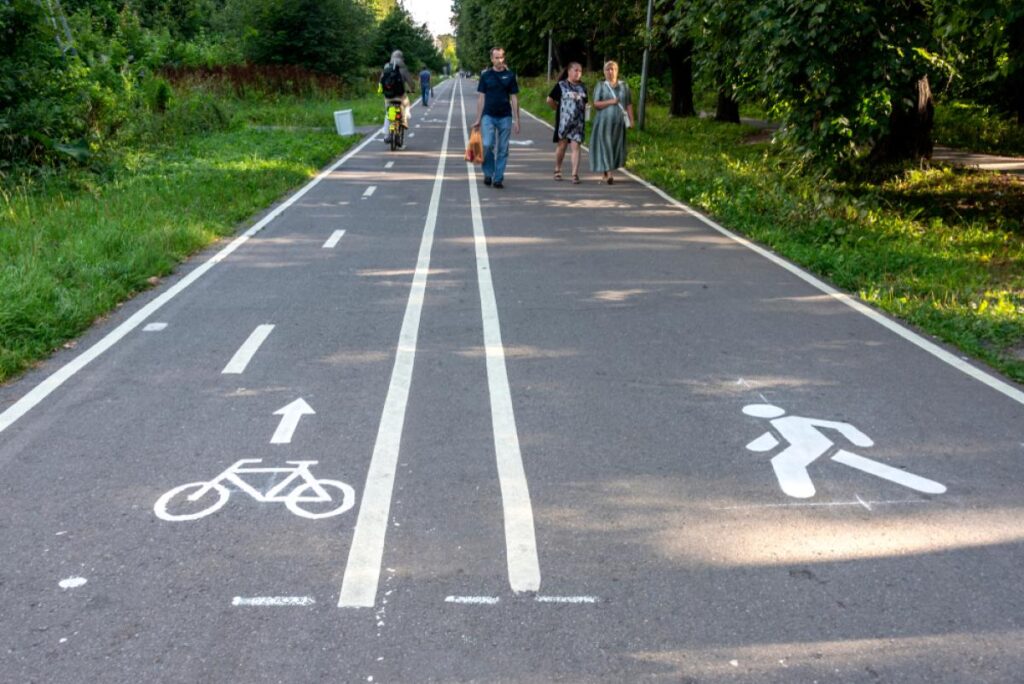Town leaders in Fairlee, Vt., are giving feedback to the Vermont Agency of Transportation (VTrans) and regional planning commissions on a potential bike corridor running the 200-mi. length of U.S. Highway 5 along the far eastern edge of the state.
Considerations for the corridor, which would connect Massachusetts to Quebec, are still in the earliest phases, according to Valley News in nearby West Lebanon, N.H. A survey gauging interest sent out by VTrans to town officials will be turned over to the Vermont Legislature when it is back in session in January.
The cost of the project — and where the money could come from — is still unclear, according to Matthew Arancio, a planning coordinator with VTrans who is leading the call for feedback on the potential project.
Rita Seto, head of transportation planning at the nonprofit Two-Rivers Ottauquechee Regional Planning Commission, emphasized that the project is still in its formative stages.
She said if the trail were to come to fruition, it might not look like what one would expect.
“[U.S.] 5 is complicated geographically, and in terms of regulation, the route meanders through a number of municipalities,” Seto elaborated, adding that that spells complexity for planners.
“Obviously creating a standalone, fully separated bike lane would be optimal,” she noted. “But I don’t think in terms of the cost and the engineering it would be feasible.”
Rather, she anticipates the corridor would include both on-roadway painted lanes and off-road paths running parallel to U.S. 5.
“A lot of these construction projects take a long time,” Seto said. “Even building something that’s just a mile takes a long time.”
Area Towns All for Trail Project
But if it were to come down the pipeline, the Fairlee Selectboard is in favor of the project, said Vice Chair Peter Berger. In the town that sits just off U.S. 5, “coexistence of car travel and bike travel is important,” he told Valley News.
In 2022, Fairlee received more than $100,000 from the Vermont Agency of Commerce and Community Development to build sidewalks and crosswalks on its main street, part of a larger town plan to increase ease of pedestrian traffic throughout the community.
Berger sees the possible route as working in concert with that project.
“There’s really a marketing piece that people aren’t aware of,” he explained. “This would be in part about making access to shopping centers for people.”
Commuters especially, traveling between towns on U.S. 5 for “purposeful” travel like work and shopping, could be served by a bike corridor. But Berger said he knows of more recreational bike users than commuters, as people flock to the town on warmer days to pedal around Lake Morey and Lake Fairlee.
He is concerned, however, about the complications of a bike route of that scale, which would be the longest in Vermont.
“The state has to be reasonable in its initiatives,” Berger said.
The Thetford Selectboard also is in “full support” of the project, wrote Chair Sharon Harkay in an email to the Valley News.
“We see it as a chance for safer cycling which would, hopefully, lead to more people getting out on their bicycles to get healthy exercise, travel to various places of interest, shop, commute and connect to other bicycle trails,” she wrote.
Proposed Trail Likely to Make Many Connections
The access the corridor would give to other bike trails across Vermont and New Hampshire also is part of the excitement, according to Tom Sexton, director of the Rails-to-Trails Conservancy, a national nonprofit trail building organization.
The U.S. 5 corridor could easily connect to New Hampshire’s Northern Rail Trail, which runs from Concord to Lebanon, said Sexton, speaking to Valley News from his office in Camp Hill, Pa.
From there, once the corridor leads riders to Wells River, Vt., they could continue on the Cross Vermont Trail — which follows the Winooski and Wells River valleys — or head to Woodsville, N.H., and pick up the Ammonoosuc Rail Trail, which continues north to Littleton, N.H.
If it were to become a reality, the proposed trail along U.S. 5 would be “a win for rural bicycling, pedestrians and economic opportunity,” Sexton added.
In New Hampshire, across the Connecticut River from Fairlee, John Adams, chair of the Orford Selectboard, said VTrans also had sent him information about the potential corridor.
Although Adams lamented that the trail project would not pass through Orford, he does see recreational cycling, and events like the annual Prouty charitable bike ride hosted by the Friends of Dartmouth Cancer Center, leading bicyclists across the Samuel Morey Memorial Bridge from Fairlee onto N.H. Highway 10 into Orford.
Arancio, the VTrans official, emphasized that the project’s “unprecedented” scale is why it is all the more important “to gauge stakeholder buy in,” he said.
Additionally, he compared the potential corridor to Vermont’s popular Lamoille Valley Rail Trail (LVRT) that runs from St. Johnsbury to Swanton and is less than half the length of the proposed U.S. 5 trail corridor.
Creation of the LVRT took over three decades of design and construction before wrapping up in 2022. The $31 million trail was constructed through state and federal funding.
With the U.S. 5 project, “we’re talking about a large, complex corridor with many different stakeholders,” Arancio explained. “This isn’t even taking into consideration additional infrastructure projects that could come up.”
So, for now, the agency’s plans remain at “step zero,” he said.
Read the full article here











